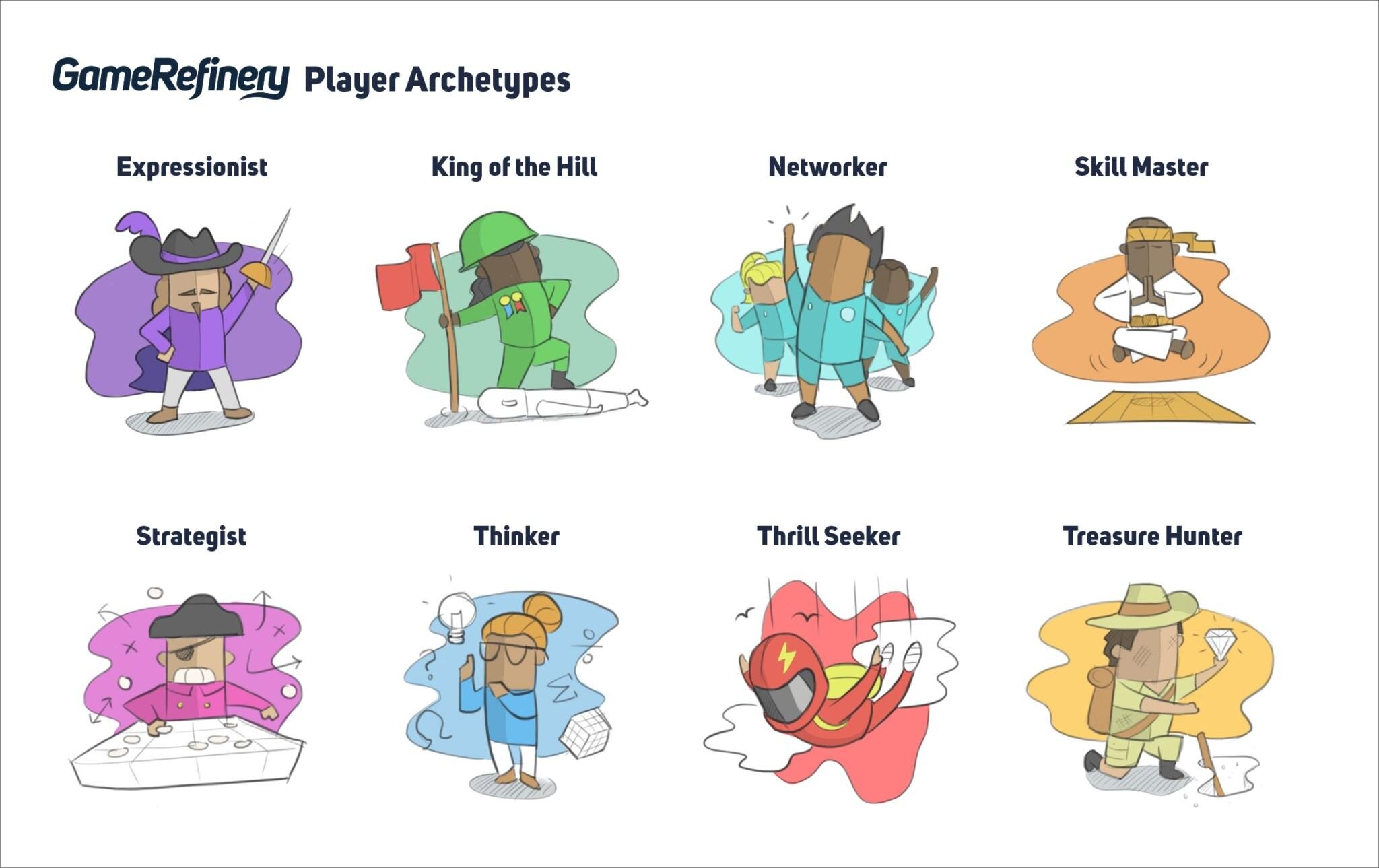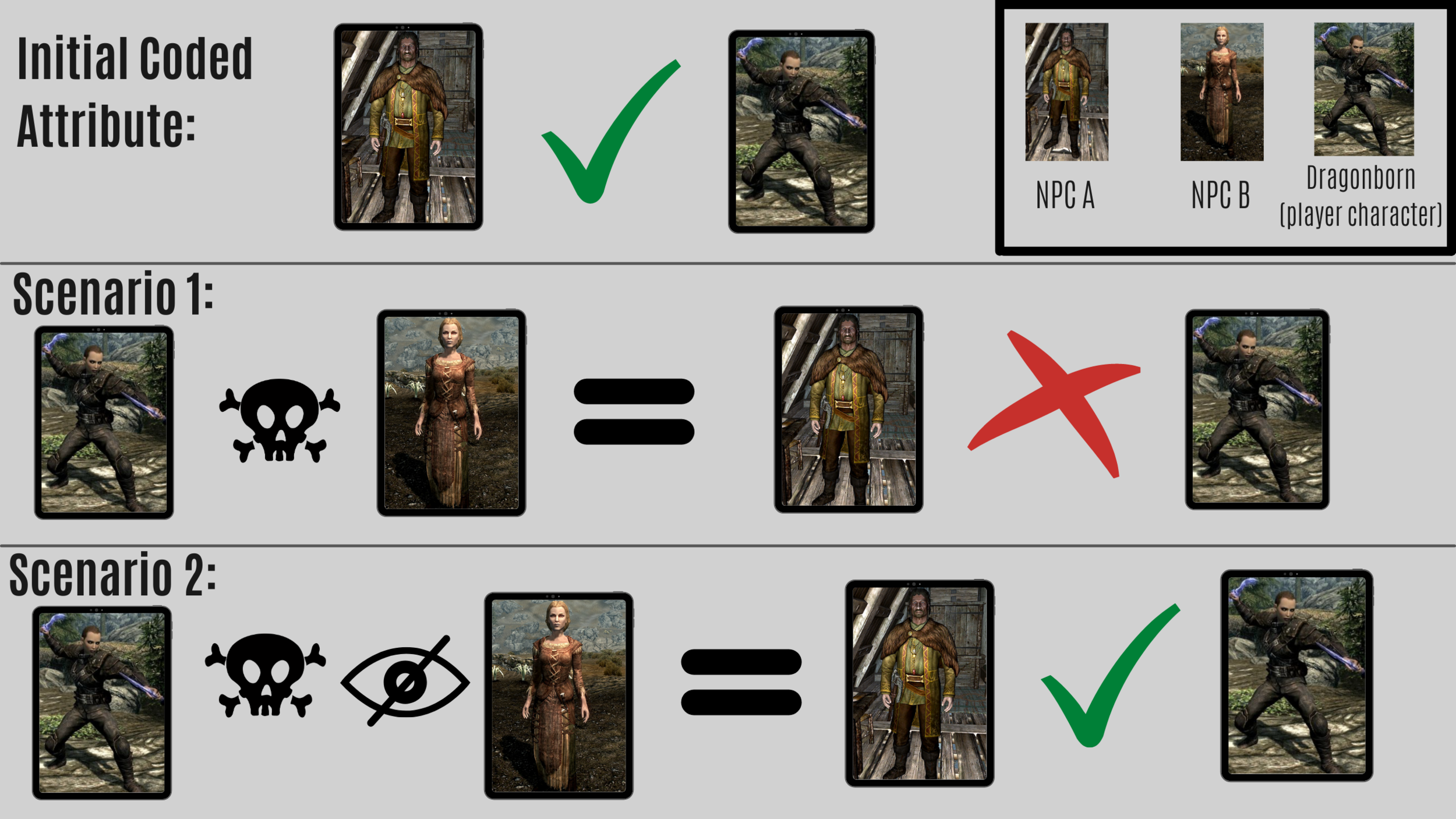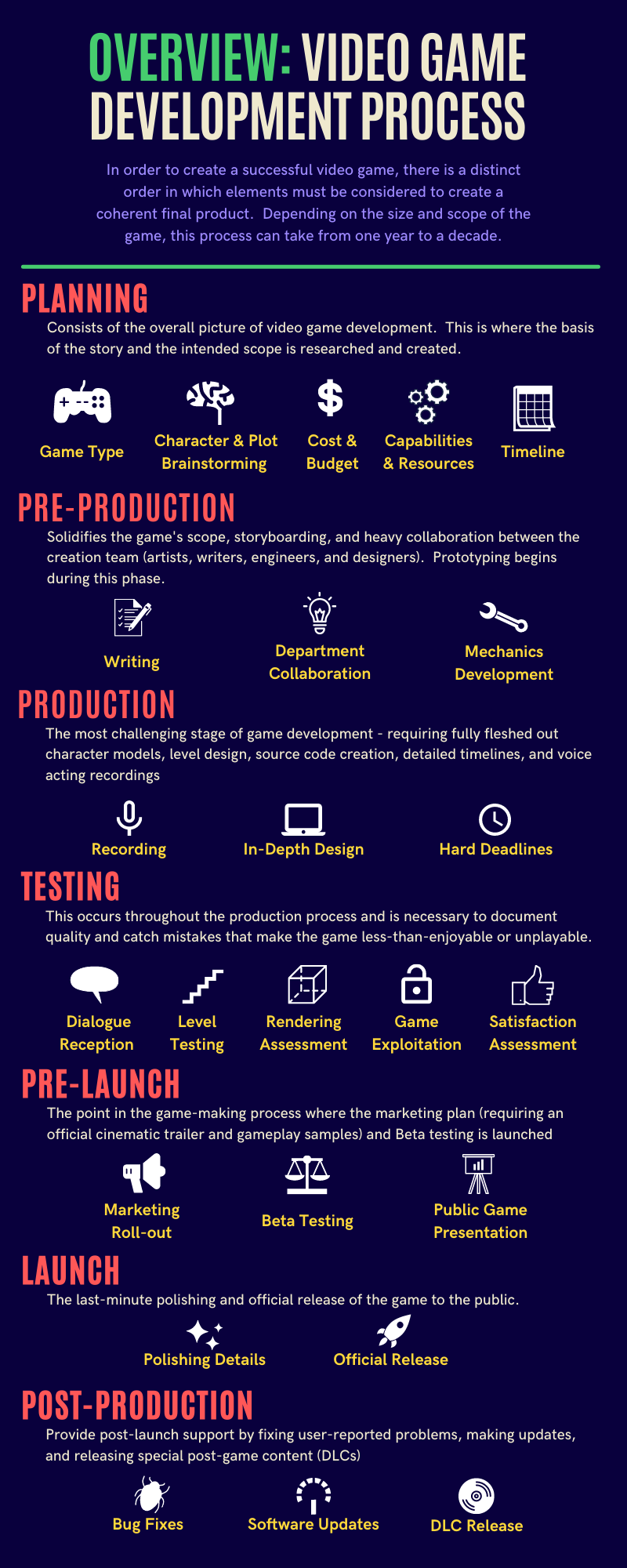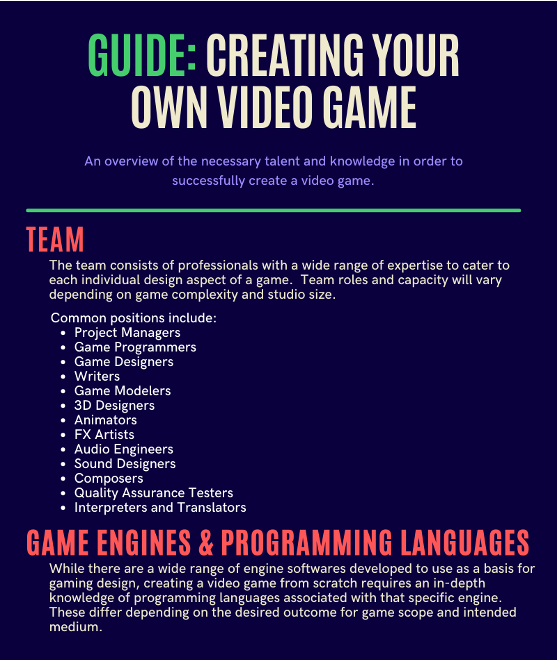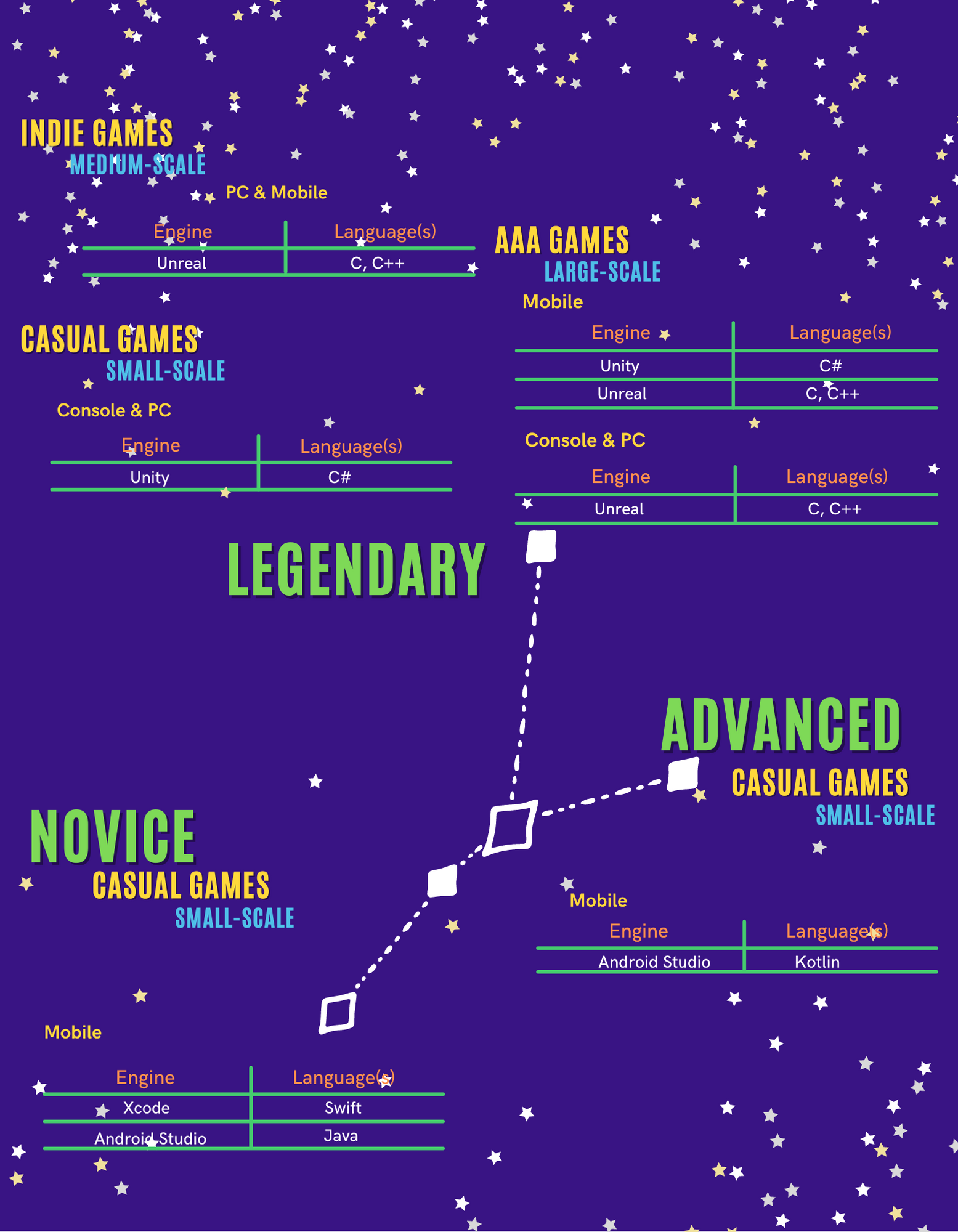Introduction
The expansion of technology has enabled a wide array of artistic growth in innumerable forms - often taking a life or genre of its own. One artistic form that has dominated the market since technology has become common in society is video games. The creation, consumption, and popularity of video games have been on an upward trend and show no signs of slowing. Take Grand Theft Auto 5, for example. It is the highest-grossing entertainment product of all time with 90 million sales and over $6 billion in revenue. This beats industry giants, such as Star Wars ($4 billion), by a landslide. While there are a few circumstances that could have been a factor in achieving this astronomical number, such as double-buying for console upgrades, this milestone resonates with the popularity of the gaming industry, regardless.
With a video game as the highest grossing piece of entertainment, it is no shock that the gaming market dominates the industry as a whole. In 2018, the global box office revenue totaled to about $47.1 billion, while the gaming industry (including all gaming types such as console, PC, and mobile games) gained a revenue of $151.2 billion. While this profit may seem abnormally large, it is important to note that there are an estimated 2.5 billion people who play video games worldwide as of 2020. If trends continue as projected, this number will only increase over time.
Video games are not popular by chance. As any form of art and entertainment, there is a specific formula that makes them a success, and allows for some to garner more popularity than the rest. It worked with Grand Theft Auto 5, as it worked for Hamilton. The success of a video game is similar to the success of a theater production, requiring artistic and script development, staging, collaboration, and a slew of manpower to execute it. In order to exemplify this, two of the most popular games of all time, The Elder Scrolls V: Skyrim and The Witcher 3: Wild Hunt, will be used as case studies to show the success and artistic intricacies of video game creation and how they are but a technological transformation of theater.
How RPGs Work: 2 Cases
The Elder Scrolls V: Skyrim and The Witcher 3: Wild Hunt are both role-playing games (RPGs). RPGs come in different forms and sub-genres, but ultimately are classified as such because they allow the player to take the role as a specific character, as well as interact with and change the world they have been placed in. RPGs have steadily gained popularity within the past decade, but have always been a staple to gaming. These games are most often consumed through the PC or console, but derive from tabletop games, such as Dungeons & Dragons – which is still widely played today. Common elements that classify games as an RPG are the ability for the player to customize their character and alter their story progression, an interactive, open-world setting (meaning that you can explore the world with little limitation), and the presence of an underlying narrative that serves as world contextualization. These elements allow users to have a more personalized gaming experience while having the ability to serve different types of players and their gaming motivations. However, in order to create this effective personalized experience, as with any other form of immersive entertainment, users need to feel a connection to the content in order to stay engaged. This is accomplished in two ways: impeccable game design with a strong software engine and an expertly-crafted story.
The world’s 2.5 billion video game consumers are all motivated by different things when they start their virtual adventure. GameRefinery recently conducted a study to determine gamer motivations and archetypes, allowing for more accurate descriptions and a deeper understanding of why people enjoy gaming. The company developed eight player archetypes and twelve motivation profiles. While the study was intended to analyze trends specific to mobile gaming, it yielded insights that are transferable to the rest of the industry. Each motivation and archetype is linked with specific gaming features, allowing developers to essentially pull from a list of gaming mechanics to best satisfy a targeted group of users. GameRefinery provides a visual summary of player motivational drivers and player archetypes.
Source: Joel Julkunen, “GameRefinery Player Motivations & Archetypes,” GameRefinery (Vungle, May 20, 2020), https://www.gamerefinery.com/gamerefinery-player-motivations-archetypes/.
Interestingly, due to the complex nature and expansiveness of RPGs, all player archetypes and motivations can be satisfied through a single game’s variety of gameplay. The way in which this is accomplished requires detailed planning, since the open-world construct requires several layers of complexity to yield a fully-functioning final product.
The complexity of RPGs requires the strategic use of player archetypes and motivations to keep users engaged through the multitude of mechanics that are required to create a successful game. These design aspects must be approached to create an experience that is appealing and provides ease of use for players while making sense of the world in which the game was built. In order to be successful, developers must consider how to implement playstyles so that all types of users can play in their desired fashion. For example, when considering combat, designers must decide how many options users can have. This is usually determined through a base skillset that can be individually customized, creating a unique gameplay experience for each player. This uniqueness of gameplay must not only be adaptable with general mechanics, but it has to connect with a complex story that allows players’ choices to alter their character’s paths and the world with which they interact. With games as complex as The Elder Scrolls V: Skyrim and The Witcher 3: Wild Hunt, the list of these considerations become lengthy quickly. These considerations are broken up into a hierarchy that determines the importance of an action or character in relation to the overall game objective. Most often, they are organized in different sets of quests. Quests are commonly categorized as main quests (objectives that specifically relate to and alter the player’s main storyline), side quests (objectives that have the intention to build familiarity and realistic-feeling lore to the origins story of this gaming world, but can also directly or indirectly influence the main story and the player’s character’s traits), and contracts or missions (objectives that are based on bettering the player character’s base skills). Each quest is crafted to complete objectives that require the use of motivational drivers, which keep the game intriguing and the world more enticing to explore. Additionally, it helps game developers better determine how to allow players and non-playable characters (NPCs) interact.
To make video games feel immersive, as if the user is truly in control, everything must be coded to have specific roles, actions, and consequences dependent upon the player’s story choices and in-world actions, such as a change in dialogue after a player completes a quest or pickpockets a civilian. Due to these nuances, everything in an RPG has purpose. There are key elements in game design that accomplish this and are supported through specific design patterns. Design patterns are “semi-formalized descriptions of design features in a design field. … The relations between patterns is an important part of describing how design choices influence each other. “ These elements are shaped through characterization, action resolution, combat, and character development. For example, an agent - an automated character that has some purpose in the world (an NPC, rather) - makes the world feel more populated by seeming “real.” However, it can also prompt the player to take action, influencing how the game progresses and how other agents interact with the player’s character. Each agent’s purpose in the game world is determined by their attributes and skills, which are character traits that are hard-coded by developers. This determines how agents interact with the player and other NPCs, as well as what an agent can do and how well they can accomplish it. The graphic below demonstrates an example of how interactions change toward a player depending on their actions.
Sources: Burgar, Charles. “Skyrim: 15 Powerful Builds Everyone Should Try.” TheGamer. www.thegamer.com, June 30, 2020. https://www.thegamer.com/skyrim-most-powerful-builds-fun/.
“Alfhild Battle-Born.” Fandom. Fandom, Inc., 2021. https://elderscrolls.fandom.com/wiki/Alfhild_Battle-Born.
“Olfrid Battle-Born.” Fandom. Fandom, Inc., 2021. https://elderscrolls.fandom.com/wiki/Olfrid_Battle-Born.
Björk, Staffan, and José Zagal. “Game Design and Role-Playing Games.” Essay. In Role-Playing Game Studies: Transmedia Foundations, 323–36. New York, NY: Routledge, 2018. https://www.researchgate.net/publication/331765161_Game_Design_and_Role-Playin g_Games
The examples above are only a few of hundreds of ways that allow agents in games like Skyrim or The Witcher to change their roles as the player progresses through the storyline and interacts with the world around them. But in order for this game design to be successful, the storylines must be expertly crafted so that all possible options continue to make sense as the plot moves forward, regardless of the order in which certain elements are completed.
Character and world development are extremely important in keeping players engaged and continually playing a game, even after five years or a decade of release, as in the cases of The Witcher 3 and Skyrim. Both games employed excellent character development and storytelling, ensuring that all NPCs have an interconnected story aligning with the player's choices, creating a believable world with which the player forms an emotional bond.
Nonprofit Arts Organizations and Gaming
With the extreme thought and effort that produces these beautifully crafted tales, it is no surprise that the gaming industry is as successful and expansive as it is. At first glance, this can be alarming for arts organizations, because it’s clear that consumers are happy to invest, and reinvest, their time and money into video games. However, this clarity exemplifies that through a Tragedy-based breakdown of some of the world’s most popular RPGs, this content creation is in the wheelhouse of arts organizations. Without artists, musicians, composers, actors, and countless other artistic-focused individuals, masterpieces such as Skyrim and The Witcher would simply not be possible. In fact, 75% to 90% of video game budgeting is allotted to artistic development.
Video game creation is rooted in the arts and culture, as they are a modern iteration of Aristotle’s model for dramatic tragedy (which can be read about in this article). Thus, arts organizations can leverage their mastery of this art form in order to stay relevant, gain wider audiences, and explore audience engagement by inserting themselves into the gaming market. The materials below serve as introductory infographics for arts organizations, detailing core considerations and a streamlined video game planning process. Additionally, it lists common employees needed to conduct video game production, common engines and coding languages used and their learning difficulty levels, so that arts organizations can jumpstart their gaming creations of their already-mastered craft.
Sources: Stefyn, Nadia. “How Video Games Are Made: The Game Development Process.” CG Spectrum. CG Spectrum, October 23, 2019. https://www.cgspectrum.com/blog/game-development-process.
Pickell, Devin. “The 7 Stages of Game Development.” Learning Hub. G2.com, Inc., October 15, 2019. https://learn.g2.com/stages-of-game-development.
Hadley, Jupiter. “So You Want to Make an RPG Game? Here's What You Should Know.” GameAnalytics. GameAnalytics, May 21, 2020. https://gameanalytics.com/blog/so-you-want-to-make-an-rpg-game-heres-what-you-s hould-know/.
MasterClass. “How to Make a Video Game: 6 Steps to Develop Your Game - 2021.” MasterClass. MasterClass, November 8, 2020. https://www.masterclass.com/articles/how-to-make-a-video-game#how-to-develop-avideo-game.
Sources: Pickell, Devin. “3 Experts Share the Best Programming Languages for Game Development.” Learning Hub. G2.com, Inc, July 31, 2019. https://learn.g2.com/best-programming-languages-for-games?hsCtaTracking=06b3f20 d-7673-4893-9763-6666a995bbc9%7C9497ea8f-505d-4f9d-91db-256e7bec2f61.
M., Laura. “How To Make A Video Game From Scratch: A Step-by-Step Guide.” BitDegree. BitDegree.org, January 25, 2021.https://www.bitdegree.org/tutorials/how-to-make-a-video-game/.
Moore, D. M. “11 Tools to Get You Started Making Video Games.” The Verge. Vox Media, LLC, April 14, 2020. https://www.theverge.com/2020/4/14/21219609/video-game-tools-editor-developer-m ake-price-free-programming.
+ Resources
“Alfhild Battle-Born.” Fandom. Fandom, Inc., 2021. https://elderscrolls.fandom.com/wiki/Alfhild_Battle-Born.
Aristotle. “THE POETICS OF ARISTOTLE.” Translated by S. H. Butcher. The Poetics of Aristotle, by Aristotle. Project Gutenberg, November 3, 2008. https://www.gutenberg.org/files/1974/1974-h/1974-h.htm.
Ates, Alex. “The Definitive Guide to Stella Adler’s Acting Technique.” Backstage. Backstage, December 24, 2018. https://www.backstage.com/magazine/article/the-definitive-guide-to-the-stella-adler-acting-technique-66369/#section1.
“Basic of Stanislavski Acting Techniques.” Method Acting for Me. Methodactingforme.com, April 1, 2021. https://methodactingforme.com/basic-of-stanislavsky-acting-techniques/.
Batchelor, James. “GTA V Is the Most Profitable Entertainment Product of All Time.” GamesIndustry.biz. Reedpop, April 9, 2018. https://www.gamesindustry.biz/articles/2018-04-09-gta-v-is-the-most-profitable-entertainment-product-of-all-time.
Björk, Staffan, and José Zagal. “Game Design and Role-Playing Games.” Essay. In Role-Playing Game Studies: Transmedia Foundations, 323–36. New York, NY: Routledge, 2018. https://www.researchgate.net/publication/331765161_Game_Design_and_Role-Playing_Games
Burgar, Charles. “Skyrim: 15 Powerful Builds Everyone Should Try.” TheGamer. www.thegamer.com, June 30, 2020. https://www.thegamer.com/skyrim-most-powerful-builds-fun/.
Chadwick, Jocelyn A. "Making Characters Come Alive: Using Characters for Identification and Engagement." The English Journal 102, no. 1 (2012): 34-39. Accessed April 10, 2021. http://www.jstor.org/stable/23269379.
COCHRANE, TOM. "Narrative and Character Formation." The Journal of Aesthetics and Art Criticism 72, no. 3 (2014): 303-15. Accessed April 10, 2021. http://www.jstor.org/stable/43282347.
Creswell, Jacob. “Why Skyrim Is More Important Than ANY Other Elder Scrolls Game.” CBR.com. www.cbr.com, November 14, 2020. https://www.cbr.com/skyrim-most-important-elder-scrolls-open-world-rpgs/.
Dautovic, G. “The Rise of the Virtual Empire: Video Game Industry Statistics for 2021.” Fortunly. Fortunly, March 26, 2021. https://fortunly.com/statistics/video-game-industry-statistics/#gref.
Franklin, Samuel. “4 Reasons Why Skyrim Is Still The Most Relevant RPG Right Now.” Game Skinny. Launch Media Network, April 12, 2018. https://www.gameskinny.com/8zr8d/4-reasons-why-skyrim-is-still-the-most-relevant-rpg-right-now.
Game Informer Staff. “The Top 100 RPGs Of All Time.” Game Informer. Game Informer, January 1, 2018. https://www.gameinformer.com/b/features/archive/2018/01/01/the-top-100-rpgs-of-all-time.aspx.
Hadley, Jupiter. “So You Want to Make an RPG Game? Here's What You Should Know.” GameAnalytics. GameAnalytics, May 21, 2020. https://gameanalytics.com/blog/so-you-want-to-make-an-rpg-game-heres-what-you-should-know/.
Hunter, Tatum. “Don't Be Boring.” Dramatics. Dramatics Magazine Online, September 9, 2019. https://dramatics.org/dont-be-boring/.
Julkunen, Joel. “GameRefinery Player Motivations & Archetypes.” GameRefinery. Vungle, May 20, 2020. https://www.gamerefinery.com/gamerefinery-player-motivations-archetypes/.
Kain, Erik. “'The Witcher 3' May Be The Best Open-World Game Ever.” Forbes. Forbes Media LLC, May 30, 2015. https://www.forbes.com/sites/erikkain/2015/05/30/the-witcher-3-may-be-the-best-open-world-game-ever/?sh=4ba139da42cb.
M., Laura. “How To Make A Video Game From Scratch: A Step-by-Step Guide.” BitDegree. BitDegree.org, January 25, 2021. https://www.bitdegree.org/tutorials/how-to-make-a-video-game/.
Maher, Cian. “Why The Witcher 3 Endures, Five Years Later.” Polygon. Vox media, LLC, May 19, 2020. https://www.polygon.com/2020/5/19/21263545/witcher-3-anniversary-open-world-interview-quest-design.
MasterClass. “How to Make a Video Game: 6 Steps to Develop Your Game - 2021.” MasterClass. MasterClass, November 8, 2020. https://www.masterclass.com/articles/how-to-make-a-video-game#how-to-develop-a-video-game.
Monroe, Shane R. “Why Witcher 3 Is the Best Game in 20 Years.” Medium. Medium, January 31, 2018. https://darkuni.medium.com/why-witcher-3-is-the-best-game-in-20-years-1069a043fccb.
Moore, D. M. “11 Tools to Get You Started Making Video Games.” The Verge. Vox Media, LLC, April 14, 2020. https://www.theverge.com/2020/4/14/21219609/video-game-tools-editor-developer-make-price-free-programming.
“Nirn.” Fandom. Fandom, Inc., 2021. https://elderscrolls.fandom.com/wiki/Nirn.
“Olfrid Battle-Born.” Fandom. Fandom, Inc., 2021. https://elderscrolls.fandom.com/wiki/Olfrid_Battle-Born.
PC Gamer. “The Best RPGs on PC.” pcgamer: The Global Authority On PC Game. Future US, Inc., March 4, 2021. https://www.pcgamer.com/best-rpgs-of-all-time/.
Pickell, Devin. “3 Experts Share the Best Programming Languages for Game Development.” Learning Hub. G2.com, Inc, July 31, 2019. https://learn.g2.com/best-programming-languages-for-games?hsCtaTracking=06b3f20d-7673-4893-9763-6666a995bbc9%7C9497ea8f-505d-4f9d-91db-256e7bec2f61.
----- “The 7 Stages of Game Development.” Learning Hub. G2.com, Inc., October 15, 2019. https://learn.g2.com/stages-of-game-development.
Rep. Video Game Market Size, Share & Industry Analysis, By Gamer Type (Extreme, Casual), By Device Type (Smart Phones, Tablets, Laptops, Consoles), By Platform Type (Online, Offline), By Age (Between 10 to 20, Between 21 to 35, Between 36 to 50, Between 51 to 65) and Regional Forecast, 2021-2028. Ongoing. Los Angeles , CA: Fortune Business Insights, 2020. https://www.fortunebusinessinsights.com/video-game-market-102548.
Stefyn, Nadia. “How Video Games Are Made: The Game Development Process.” CG Spectrum. CG Spectrum, October 23, 2019. https://www.cgspectrum.com/blog/game-development-process.
Tailford, Scott. “9 Reasons Skyrim Is Still One Of The Best Video Games Of All Time.” WhatCulture.com. What Culture Ltd., November 1, 2016. https://whatculture.com/gaming/9-reasons-skyrim-is-still-one-of-the-best-video-games-of-all-time.
Theatrefolk. “The Stanislavsky System– The Process.” Theatrefolk. Lindsay Price, 2017. https://www.theatrefolk.com/freebies/the-stanislavsky-system-the-process.pdf.
Weber, Rachel. “Games That Defined the Decade: Skyrim Is a Cultural Leviathan of Its Own Making.” gamesradar+. FutureUS, Inc., December 19, 2019. https://www.gamesradar.com/games-that-defined-the-decade-skyrim/.
“What Are RPG Elements and Why Are They in Every Game?” Plarium. Plarium, December 24, 2017. https://plarium.com/en/blog/rpg-elements/.
White, Sam. “At Five Years Old, The Witcher 3 Is, More than Ever, the Game of Forever.” VG247. Gamer Network Limited, May 19, 2020. https://www.vg247.com/2020/05/19/the-witcher-3-game-of-forever/.


